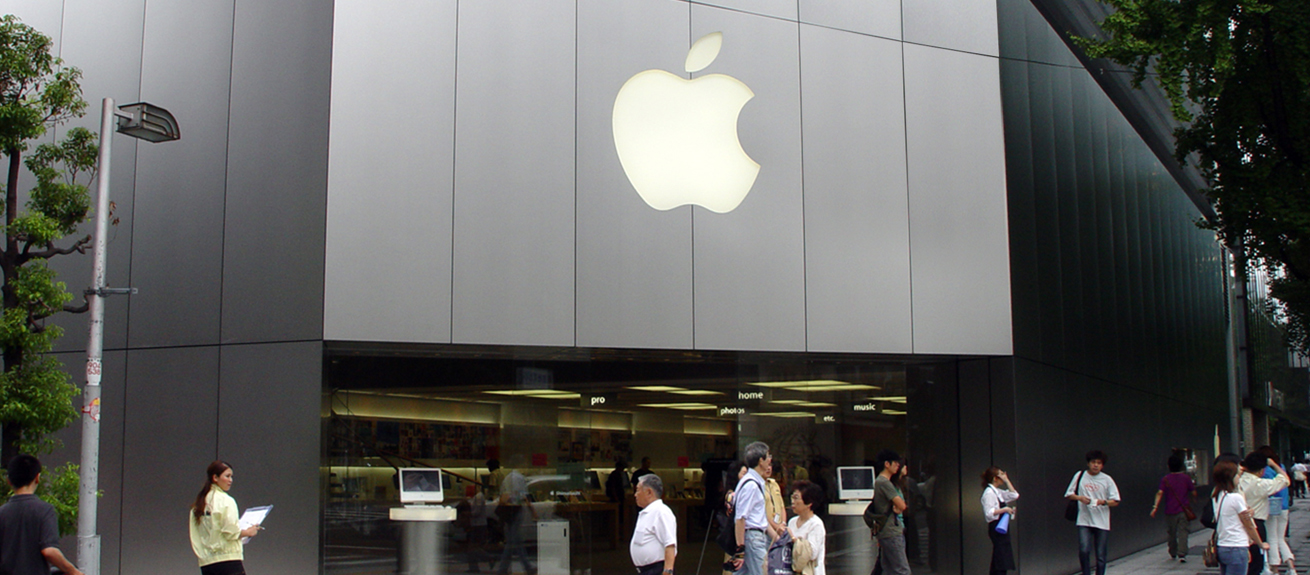
It’s time for Apple to buy these tech giants
As Apple’s stock climbed to its fifth record in March on Tuesday, and it’s 11th record this year, it’s a good time to take a serious look at what the tech giant should take on next. Apple is renowned for being a great disruptor, relying on a “build rather than buy” approach. However, when the company released an underwhelming new iPad last week, many began to question its innovator status.
I previously argued that Apple is pursuing a harvest strategy, a smart strategic move in which it extracts as much profit as possible from a static or declining market. iPad sales are down (along with all tablets), and Apple is trying to capture returns while it is still possible to do so. This makes sense, and the markets seem to agree, as Apple stock hit another record level yesterday.
However, the Mac, iPad and iPhone – responsible for more than 85% of Apple’s revenue – are all under increasing pressure today, and the future looks harder, not easier. Consumers are resisting the urge to upgrade for marginal improvements. Competitors, like Samsung, ZTE and Huawei are closing the quality gap and are, in many cases, providing superior features at a lower cost. Plus, IOS is losing the global platform war with Android. While there is still plenty of harvesting to be done from these lines of business, the long-term prognosis does not look positive.
To reassert its place as a digital disruptor, Apple will need to move from a defensive strategy to an offensive one. Thankfully, Apple has the brand name, the loyal following, and, with around $200 billion in cash on the balance sheet, the money to do so. Yet, while other cash-rich competitors have splashed out on high-profile acquisitions, Apple has largely watched from the sidelines. Its largest acquisition to date has been Beats for $3 billion in 2014 – a mere pittance compared to many of its peers.
Apple’s recent attempts to occupy new battlegrounds have not been very successful. The Apple Watch has failed to ‘revolutionize the wrist;’ Apple’s car strategy seems to have stalled and Apple Music has not been closing the gap to Spotify. Apple needs to become better at occupying new competitive spaces, as explained in the Digital Vortex, whether or not it is the disruptor.
Building from scratch takes time, and Apple has lost momentum recently in areas outside its core. The company has cash, and now is the time to spend it. It’s time to buy rather than build.
So what should Apple’s next acquisition be? First, any acquisition should fit the company’s image. It should have great design, be innovative, simplistic, technology-focused, and have a high-end or luxury reputation. These criteria rule out some commonly considered targets such as Disney (too diversified) and Sony (too complex). A list of possible and not-so-possible contenders includes:
Pandora ($3 billion market cap)
An acquisition of Spotify would probably not clear anti-trust scrutiny, so if Apple wants to gain an additional foothold in the music streaming arena, it could buy Pandora for a relatively small $3 billion to $5 billion. However, this will not move the needle much, and Apple should be thinking bigger.
Tesla ($44 billion market cap)
Apple and Tesla have been trading barbs and engineers for years. Buying Tesla could be a fast way for Apple to enter the car business, with a strong, high-end, innovative brand. However, Tesla is relatively small, unprofitable and vulnerable to shocks. It is also very much linked to its CEO, Elon Musk, which could mean a clash of egos with Apple CEO Tim Cook.
PayPal ($52 billion market cap)
Apple Pay, launched with great fanfare in October 2014, has not taken off as quickly as many expected. Apple has learned the hard way that the financial services industry is complex, well protected and generally hard to crack. The acquisition of PayPal (assuming it is approved by anti-trust regulators) would give Apple more heft to convince both consumers to adopt and merchants to accept its payment service. However, financial services are a long way from Apple’s core, and could become a distraction.
Activision Blizzard ($37 billion market cap)
Apple could move into the gaming arena, which has now become bigger than both the movie and music industries combined. While Activision Blizzard does not have a game console business, it is strong in PC, online and mobile gaming (with the acquisition of the parent company of Candy Crush). If Apple wants to enter an adjacent industry, this is an interesting option.
Netflix ($61 billion market cap)
Apple has been dancing around video for years, but has never managed to crack the upper echelons of content creation or distribution. It has achieved great success by capturing value from devices such as the iPod, iPhone and iPad at the expense of content generators and other ecosystem players. However, there is plenty of evidence to suggest this balance is swinging away from device manufacturers. Both Netflix and Amazon understood this trend, and have been making strides to get ahead of it.
Netflix has been tremendously successful — first in the distribution, and now in the generation of content. Apple, by contrast, has been slow to react. It will have a hard time bridging this gap, especially with the traditional content generators waking up to the value they create, and other new entrants, like Amazon, making a lot of noise. Netflix is an expensive option, but would bring Apple massive platform value.
With its reputation at stake, Apple must expand on its current strategy and open new markets to play in. Harvesting as much profit as possible from its current hardware business makes sense, but it needs to transfer this value to new areas, such as gaming, and content generation and distribution. Traditionally, Apple builds its own products to enter new markets. However, its last few attempts to do so have flopped and time is not on its side. Therefore, Apple should use its massive wealth to make strategic acquisitions and occupy adjacent markets – with Activision Blizzard or Netflix making very attractive targets.
Michael Wade is Director of the Global Center for Digital Business Transformation, Professor of Innovation and Strategy at IMD and co-author of Digital Vortex: How Today’s Market Leaders Can Beat Disruptive Competitors at Their Own Game. Wade is not an investor in Apple or other companies noted in this article.
This article first appeared in Fortune.
Research Information & Knowledge Hub for additional information on IMD publications
In June 2024, at the CocoaCrafters Operating Centre, Elena Fever faced a crucial meeting with the board of directors. The discussion surrounded how to integrate Generative AI (GenAI) into the company’s supply chain strategy to enhance forecasting ...
Officially, brands executives continue to display confidence that big luxury will shrug off the 2024 downturn as a cyclical one. They see it as the product of the combined collapse of real estate prices in China and a return to normalcy after the ...
in I by IMD
Research Information & Knowledge Hub for additional information on IMD publications
in I by IMD
Research Information & Knowledge Hub for additional information on IMD publications
Research Information & Knowledge Hub for additional information on IMD publications
Research Information & Knowledge Hub for additional information on IMD publications
Case reference: IMD-7-2593 ©2024
Research Information & Knowledge Hub for additional information on IMD publications
in I by IMD 8 January 2025
Research Information & Knowledge Hub for additional information on IMD publications
Research Information & Knowledge Hub for additional information on IMD publications
Research Information & Knowledge Hub for additional information on IMD publications
in I by IMD
Research Information & Knowledge Hub for additional information on IMD publications
in I by IMD
Research Information & Knowledge Hub for additional information on IMD publications







